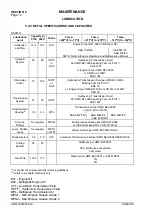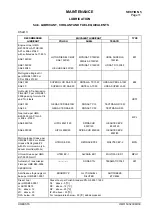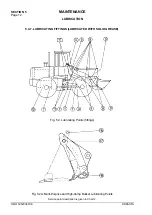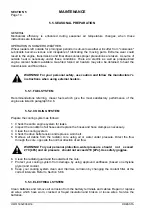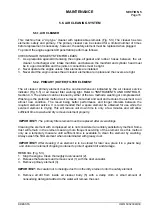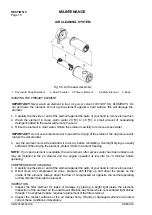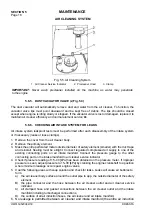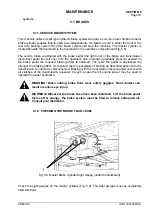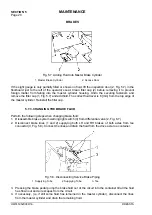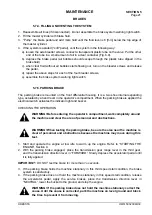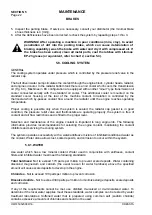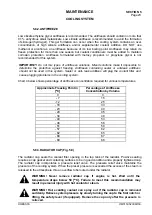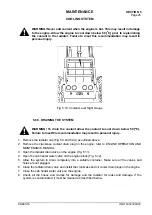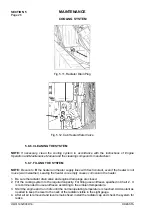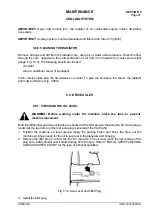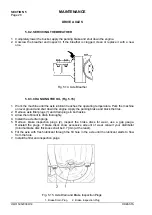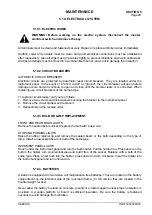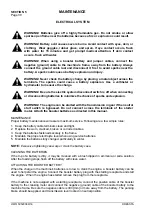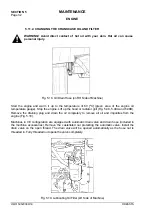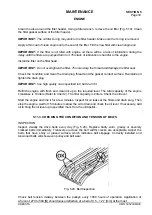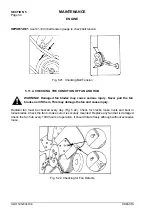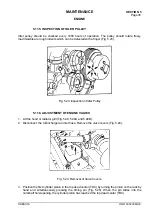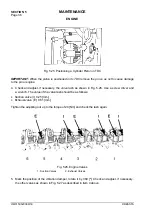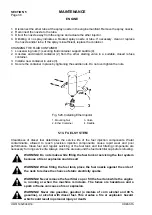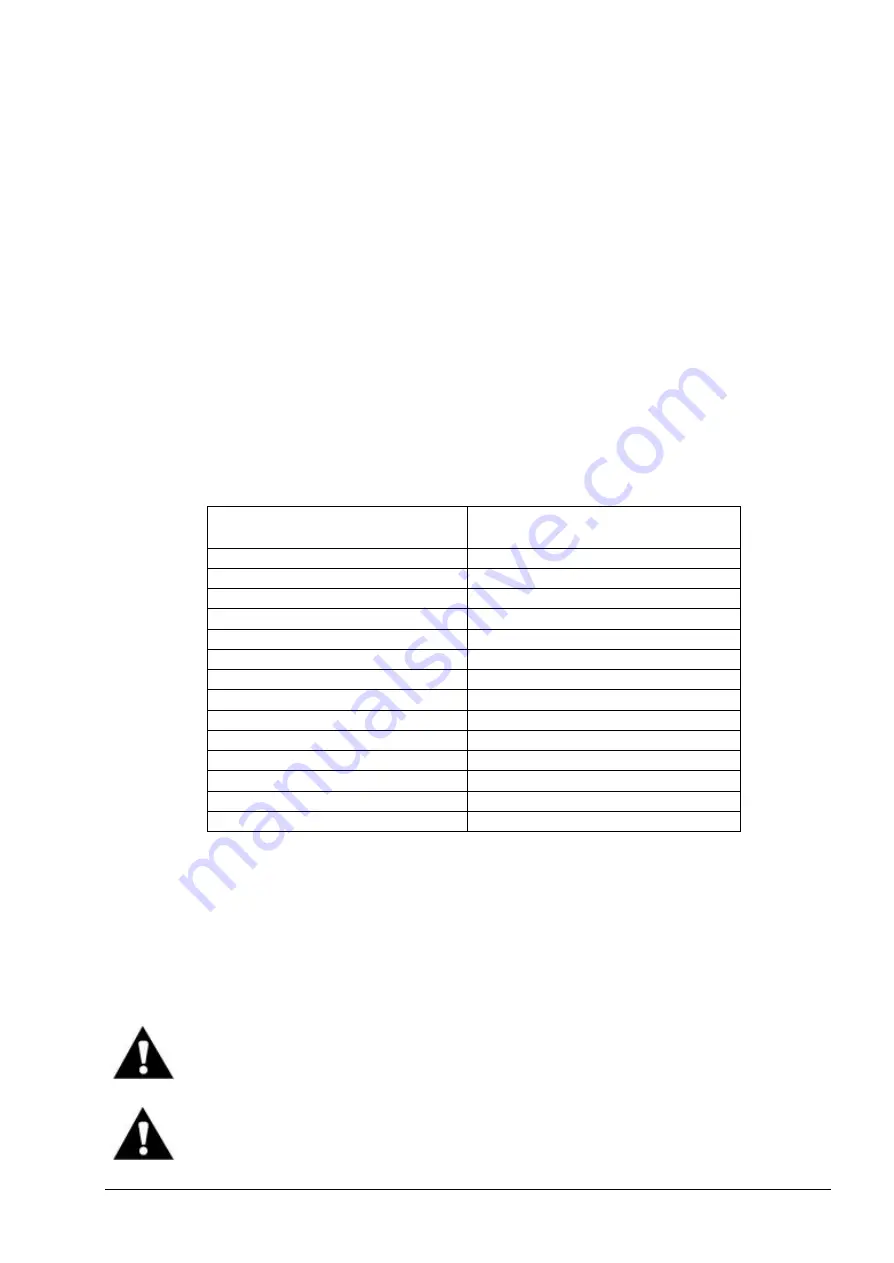
MAINTENANCE
SECTION 5
Page 23
DRESSTA
OM515C520C99/1E
COOLING SYSTEM
5.8.2. ANTIFREEZE
Low silicate ethylene glycol antifreeze is recommended. The antifreeze should contain no more that
0.1% anhydrous alkali metasilicate. Low silicate antifreeze is recommended to avoid the formation
of silica-gel (hydro-gel). This gel formation can occur when the cooling system contains an over
concentration of high silicate antifreeze and/or supplemental coolant additive. DO NOT use
methanol or alcohol as an antifreeze because of its low boiling point. Antifreeze may retain its
freeze protection for more than one season but coolant conditioners must be added to maintain
corrosion protection. Antifreeze formulated with metoxy propanol, or propylene glycol is not
recommended for this system.
IMPORTANT!
Do not mix types of antifreeze solutions. Mixed solutions make it impossible to
determine the protection against freezing. Antifreeze containing sealer or anti-leak additives
should not be used in this system. Sealer or anti- leak additives will plug the coolant filter and
cause plugging problems in the cooling system.
Chart 4 below shows percentage of antifreeze concentration required for various temperatures.
Approximate Freezing Point in
[ºC]
Percentage of Antifreeze
Concentration by Volume
0
0
- 7
15
-12
25
- 18
33
- 23
40
- 29
45
- 34
48
- 40
53
- 46
56
- 51
59
- 57
62
- 62
65
- 68
67
- 69
68
5.8.3. RADIATOR CAP (Fig. 5.9)
The radiator cap seals the coolant filler opening in the top tank of the radiator. Positive sealing
requires a cap gasket and contacting surfaces to be in good condition and a properly tightened cap.
The radiator cap incorporates a pressure relief valve. The pressure relief valve maintains the
pressure of the cooling system. When the preset pressure is exceeded the excess of the steam is
released to the atmosphere thru an overflow tube routed under the radiator.
WARNING! Never remove radiator cap if engine is hot. Wait until the
temperature drops below 50 [
°°
C]. Failure to meet this recommendation may
result in personal injury with hot coolant or steam.
WARNING! Hot, scalding coolant can spray out if the radiator cap is removed
suddenly. Relieve system pressure by slowly turning the cap to the first notch or
lifting the safety lever (if equipped). Remove the cap only after the pressure is
relieved.
Summary of Contents for 515C
Page 3: ...OM515C520C99 1E DRESSTA ...
Page 5: ......
Page 7: ......
Page 10: ...SECTION 1 INTRODUCTION ...
Page 12: ......
Page 17: ...SECTION 2 SAFETY PRECAUTIONS ...
Page 19: ......
Page 37: ...SECTION 3 MACHINE TRANSPORT AND STORAGE ...
Page 39: ......
Page 49: ...SECTION 4 OPERATING ...
Page 51: ......
Page 107: ...SECTION 5 MAINTENANCE ...
Page 165: ...SECTION 6 SPECIFICATIONS ...
Page 167: ......
Page 181: ...SECTION 6 SPECIFICATIONS Page 16 OM515C520C99 1E DRESSTA WIRING DIAGRAMS ...
Page 182: ...SPECIFICATIONS SECTION 6 Page 17 DRESSTA OM515C520C99 1E WIRING DIAGRAMS ...
Page 187: ...SECTION 6 SPECIFICATIONS Page 22 OM515C520C99 1E DRESSTA WIRING DIAGRAMS ...


